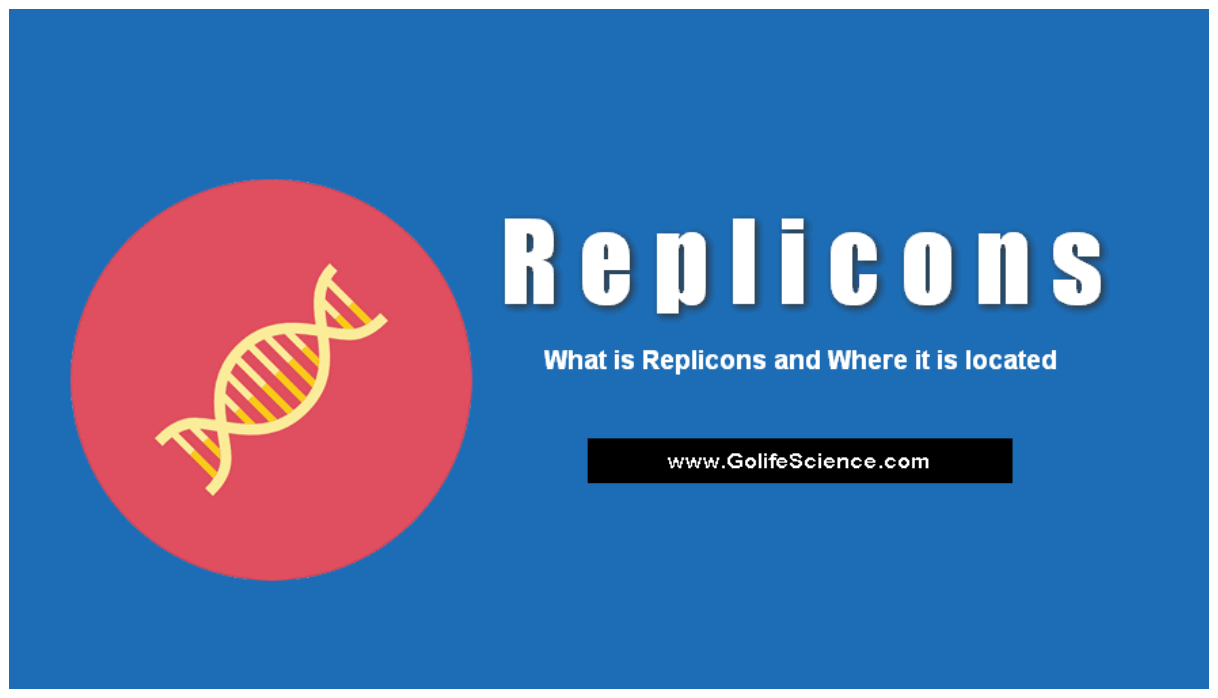For most prokaryotic chromosomes, the replicon is the entire chromosome. One notable exception found comes from archaea, where two Sulfolobus species have been shown to contain three replicons. Examples of bacterial species that have been found to possess multiple replicons include Rhodobacter sphaeroides, Vibrio cholera, and Burkholderia multivorans.
These “Secondary” (or tertiary) chromosomes are often described as a molecule that is a mixture between a true chromosome and a plasmid and are sometimes called “chromids”.
For Eukaryotic chromosomes, there are multiple replicons per chromosome. The definition of replicons is somewhat confused with mitochondria, as they use unidirectional replication with two separate origins.

Detailed Explanation about Replicons
- It is critical that all the DNA in a cell be replicated once, and only once, per cell cycle. Jacob, Brenner, and Cuzin defined a replicon as the unit in which the cell controls individual acts of replication.
- The replicon initiates and completes synthesis once per cell cycle. Control is exerted primarily at the initiation. They proposed that an initiator protein interacted with a DNA sequence, called a replicator, to start replication.
- The replicator can be identified genetically as a DNA sequence required for replication, whereas the origin is defined by physical or biochemical methods as the DNA sequence at which replication begins.
- For many replicons, such as the E. coli ori.C and the autonomously replicating sequences (or ARS) in yeast, the replicator is also an origin. However, this need not be the case: the replicon for amplified chorion genes in silkmoths has an origin close to, but separable from, the replicator.
- Initiator proteins have now been identified for some replicons, such as the DnaA protein in E. coli and the Origin Recognition Complex in the yeast Saccharomyces cerevisiae.
- In both cases, they bind to the replicators, which are also origins in these two species.
- The replicator is a sequence of DNA needed for the synthesis of the rest of the DNA in a replicon. It is a control element that affects the chromosome on which it lies.
- We say that this element acts in cis since the replicator and the replicon are on the same chromosome. In contrast, the initiator is a protein that can be encoded on any chromosome in a cell.
- Thus is acting in trans, since it does not have to be encoded on the same chromosome as the replicon that it controls.
- In general, a trans-acting factor is an entity, usually a protein, that can diffuse through the cell to act in the regulation of a certain target, whereas a cis-acting DNA sequence is on the same chromosome as the target of control.
- This pattern of a trans-acting protein binding to a cis-acting site on the DNA is also seen in transcriptional control.
Suggested Readings:
- What are DNA Polymerase and its function in DNA Replication
- What is Fidelity of DNA Replication in Normal
- DNA Replication: Simple Steps of DNA replication in E.Coli
- DNA Damage: The Causes of DNA damage
- Mechanism of Eukaryotic DNA Replication
Plasmids and bacteriophages are usually replicated as single replicons, but large plasmids in Gram-negative bacteria have been shown to carry several replicons.
